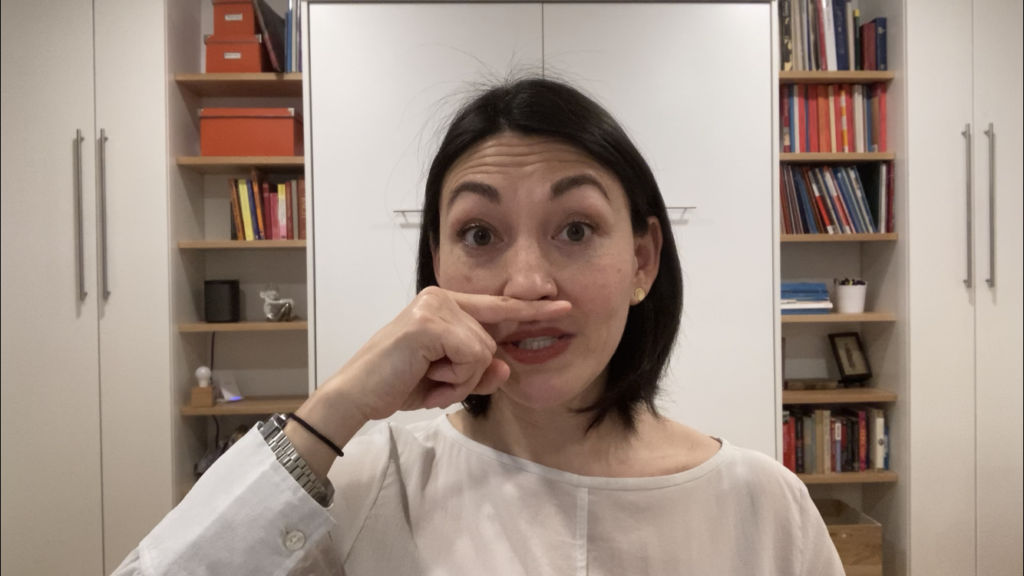Humming is wonderful. It’s the original SOVT (Semi-Occluded Vocal Tract) exercise, healing and gentle for the voice, naturally placed in the optimum position high and forward in the face.
Does this sound familiar, or is humming more of a squeezy, tight feeling, like two dry sticks rubbing together in your throat? Here’s a quick video on guided humming, with all my best tips on getting a free, volumized hum throughout the vocal range.
Ok, so the pitch pattern here is a four note scale – do re mi fa mi re do, nice and simple, and we’re just going to hum it on three types of hum:
- M hum – lips lightly together, teeth apart inside the mouth
- N hum – tip of tongue up behind top teeth, teeth slightly apart, lips can be slightly apart
- NG hum – back of the tongue up against the roof of the mouth, lips and jaw can be as open as in “ah” vowel
I do these three, moving from M to N and then NG as I modulate upward by half-steps. That’s the particular arrangement of this specific exercise, but the real gold of this exercise is not in the pitches or which hum in which part of the range, but actually in THE WAY YOU MOVE THE AIR as you hum. And if you find humming challenging, try this fix.
Put a finger under your nose (like a mustache) and hum on M.
Now, say, “Hmmmmm . . . ” like I’ve just asked you what eleventy nine times fifty four equals. Did you feel that puff of air through the nose, especially at the start? See if you can do it again, this time keeping that air flow THROUGH THE NOSE the whole time you’re making sound. Now try it on pitches. Don’t lose that nose puff on H! Don’t lose that finger mustache! Don’t stop the air flow! Don’t stop believing! Hold on to that feeling!
This way of humming is much more voluminous and free, and moves more easily from pitch to pitch. You can recreate the starting H puff on all three types of hum, and hopefully leave that feeling of grinding in the neck behind for good.
Happy singing, and thanks for practicing!


